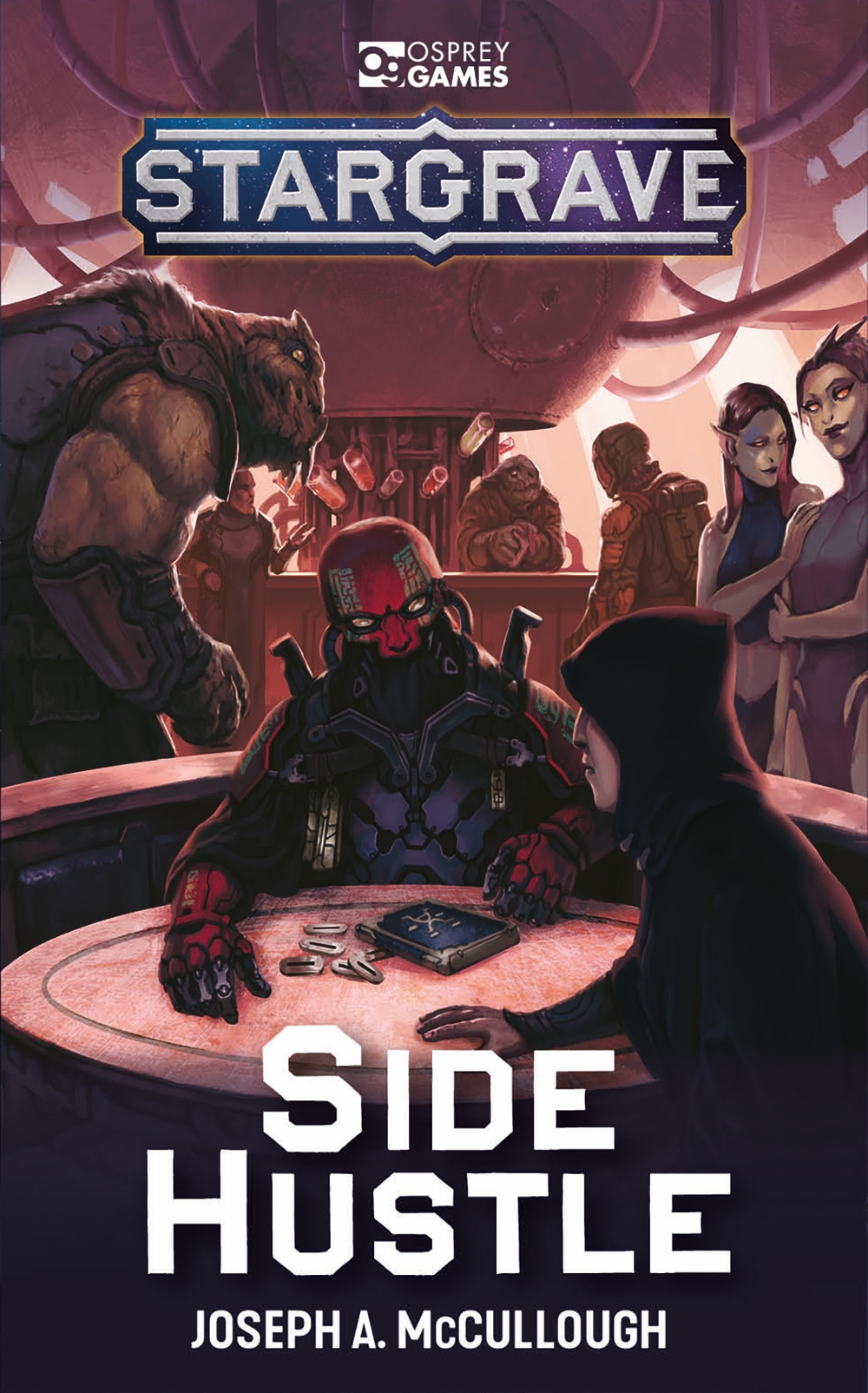
Before Stargrave: Side Hustle is out next week, read all about the design process behind the scenes from author Joseph A. McCullough...
My single greatest driving force as a game designer is to bring greater narrative to tabletop wargaming, or to put it another way, to keep pushing wargaming just that little bit closer to role-playing. In Stargrave, over the years, I have mainly pushed narrative through warband development and different campaign structures. Quarantine 37 has two campaigns where the scenarios work together to tell stories of survival against deadly hordes. Last Prospector features a campaign based on a specific system in space where the players have some freedom to explore while trying to solve a mystery. And, of course, Hope Eternal is just one big story with multiple chapters that starts with a simple rescue operation but eventually leads to a massive strike against the pirate fleets. I think each of these has done well to bring narrative to the game. However, all of them require a major commitment in terms of preparation and time. Having done these, I was eager to work on an expansion that could bring more narrative to one-off games of Stargrave, that wasn’t dependent on unique terrain set-ups, and that gave players asymmetric objectives.
I think it is that last one that really appeals to me as a designer. When creating a tabletop wargame, most scenarios achieve their balance through symmetry – both players have equal opportunity to reach the objective, whatever that is, while being equally exposed to the scenario’s dangers. This works fine, as long as you are happy for players to always be fighting over the same thing, and when that thing is ‘loot’ in whatever shape or form, it does make sense. But it only makes sense for a while. Okay, bands of treasure hunters will occasionally hear the same rumours, find similar treasure maps, or hunt down the same lost temple… but the more it happens the more it stretches incredulity. Now, in truth, I think this is something I worry about a lot more as a designer than most players do, but if it drives me to create a better game experience it is a good thing. Also, I think players like to believe that their crews are often doing more specific things than just generic treasure hunts. So really, what I wanted to bring to Stargrave was a system of creating simple, asymmetric scenarios on the fly that gave the players different reasons for their crews to be at a specific place.
Now, thankfully, I had already done some work on this idea for Frostgrave, with the Ulterior Motives expansion. This deck of cards remains one of my proudest achievements for the game. Simply put, each player draws one of these cards before the game and this gives them a specific task or mission that they are trying to accomplish (while still trying to grab loot on the side), but which could generally be kept secret from their opponent. So, really, it accomplished exactly what I wanted to bring to Stargrave! However, after a few more years of game development and of thinking about the system I created for Ulterior Motives, I saw two areas that could be improved. The biggest drawback to Ulterior Motives is that it required both players to have a set of six different small terrain pieces. This worked well for keeping things secret on the table but was a bit much to carry around with your warband. Additionally, this system sometimes led to cases where warbands just sort of skirted around one another to reach their objective.
So, when I came to work on Side Hustle, I decided to keep the basic idea of the draw a card with a secret mission/special task, but to revamp the way the terrain worked. In Side Hustle, most of the secret objectives revolve around three specific pieces of terrain that feature in every game: a pylon, a pit, and a destroyed robot. Unlike before, where both people needed their own set (of 6), now both players use the same three. Thus, very little special terrain is needed for these games. Even better, now players don’t know if they are going for the same objective as their opponent or not. And, since the objectives are positioned relatively close to one another in the centre of the table, do you really want to take the risk of them getting there first? So, with one change, I both reduced the amount of specific pieces needed and increased the player interaction, without losing any of the variety and narrative available.
With a simple deck of forty cards, and three small terrain pieces, Side Hustle allows players to set up a quick game of Stargrave, but still get a lot of the narrative feel of a fully-crafted scenario. Additionally, it gives backstory to the crews, explaining their motivations, and getting them entangled in a greater narrative. Not only do the cards work for a specific game, but they can be used as launch points for future scenarios.
I’m really excited to see this deck of cards hit the market and hear the tales of the independent crews as they fight and die trying to complete their side hustles!
Stargrave: Side Hustle is available a week today, Thursday March 23rd.




Comments
You must be logged in to comment on this post. Click here to log in.
Submit your comment